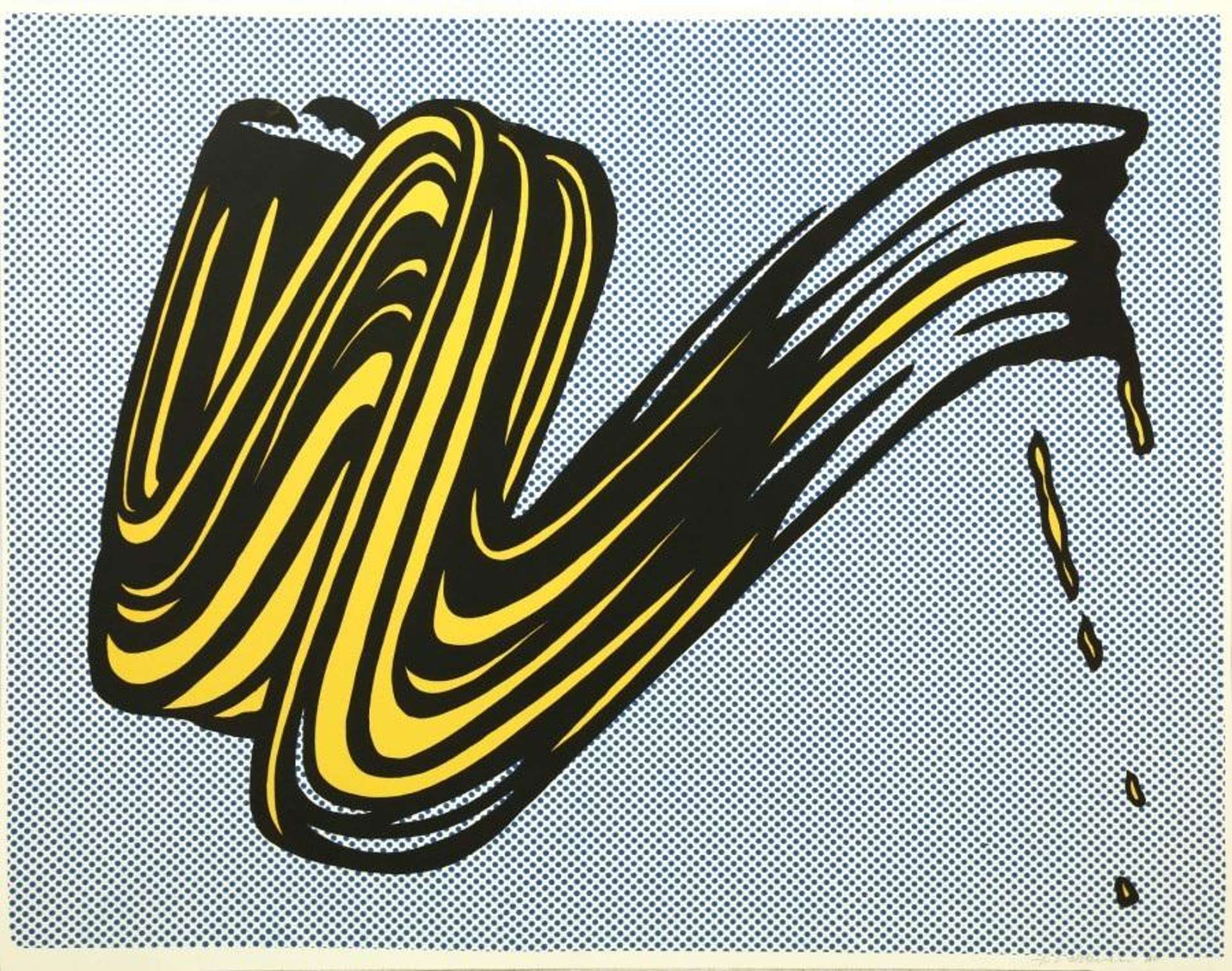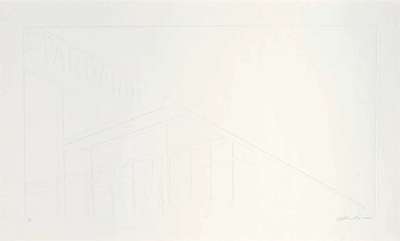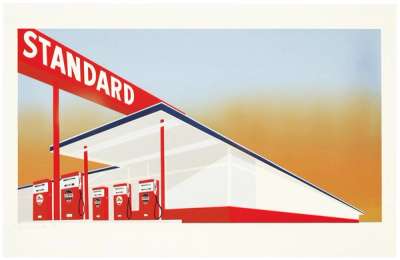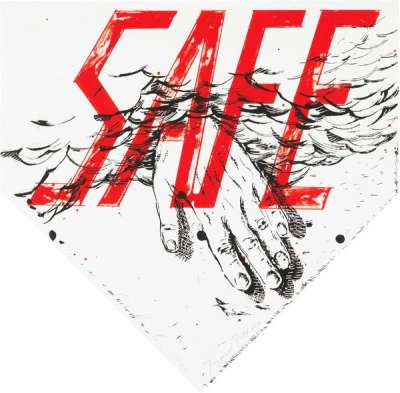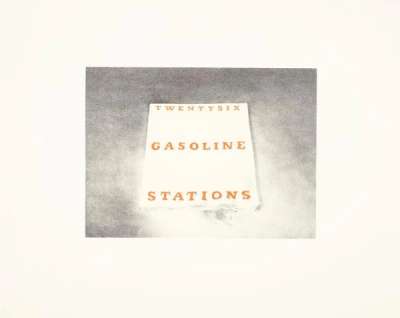Exploring Ed Ruscha’s Iconic Gas Stations

 Twentysix Gasoline Stations, Book Cover © Ed Ruscha 1970
Twentysix Gasoline Stations, Book Cover © Ed Ruscha 1970
Ed Ruscha
239 works
Key Takeaways
Ed Ruscha's gas station series captures the essence of American culture through minimalist depictions of everyday structures. Rooted in the vast, open landscapes of the American West, these gas stations serve as symbols of mobility, consumerism, and the rise of car culture in mid-20th century America. Ruscha’s works blend Pop Art with conceptual art and elevates mundane scenes into cultural icons; influencing contemporary art and redefining how everyday imagery is perceived.
Ed Ruscha has long been fascinated with the American landscape, particularly the scenes that define everyday American life. His artistic vision is deeply rooted in the exploration of American culture, utilising a minimalist aesthetic to present scenes that are often overlooked. Ruscha’s gas station series stand out as a defining element of his oeuvre; these works encapsulate the essence of the vast American landscape, characterised by its openness, mobility, and the ubiquity of car culture. Through his deliberate focus on these everyday subjects, Ruscha positioned himself as a vital figure in both Pop Art and conceptual art movements.
The Genesis of Ruscha's Gas Stations Series
Early Inspirations
Ruscha’s fascination with the mundane aspects of American life can be traced back to his early experiences in Oklahoma and Los Angeles. Growing up in Oklahoma and later moving to Los Angeles, Ruscha was surrounded by the vast, open landscapes of the American West, where long stretches of highway were punctuated by everyday structures such as gas stations. These landscapes became a significant influence on his artistic vision, shaping his interest in capturing the seemingly ordinary scenes that define American culture. This interest aligned with the ethos of the Pop Art movement, which emerged in the 1950s and 1960s, celebrating everyday objects and commercial imagery as worthy subjects of art. Ruscha’s engagement with Pop Art allowed him to elevate mundane elements, such as gas stations, into iconic symbols that captured the spirit of the American road and the cultural shifts of the mid-20th century.
26 Gasoline Stations (1963)
One of Ruscha’s most significant early works is the artist book Twentysix Gasoline Stations, first published in 1963. This publication features a collection of black-and-white photographs of gas stations located along the highway between Ruscha’s home in Los Angeles and his parents’ house in Oklahoma City. The shots, taken from the highway, often included large areas of the forecourt or road, giving them the appearance of straightforward, factual records of these everyday sites.
The book's cover design further reflects this simplicity, with the title printed in red over three separate lines. The brightness of the cover is muted by a protective wrap-around cover, adding to the understated aesthetic of the piece. As Ruscha's first venture into artist books, Twentysix Gasoline Stations was groundbreaking and would set the tone for his subsequent publications, establishing a new format that broke away from traditional bookmaking.
Writer and critic, Johanna Drucker, remarked on the work's impact, noting that while the shock and humour of its initial reception may have diminished over time, in 1962, it stood out against the highly aestheticised tradition of American photography by offering a starkly different approach. Ruscha's photographs defied the conventions of both fine art imagery and humanistic critical vision, opting instead for a seemingly detached and objective style that was revolutionary at the time.
The influence of Ruscha’s work on other artists has been significant, with Twentysix Gasoline Stations serving as a reference point for subsequent generations of artists interested in exploring similar themes and concepts. His work has been copied, mimicked, and appropriated by other artist book producers, illustrating its impact and continued relevance. For instance, in 1969, American artist Bruce Nauman created Burning Small Fire, a folded broadsheet that documents the burning of another of Ruscha’s works, Various Small Fires and a Glass of Milk (1964). More recent appropriations include Tom Sowden’s Fortynine Coach Seats Travelling Along the M4 (2003). These works underscore the enduring legacy of Ruscha's innovative approach to the artist book format and its impact on contemporary art.
Standard Station Prints
Ruscha’s Standard Station (1966) became a quintessential example of his distinctive style and thematic focus. The painting depicts a gas station marked by the word ‘Standard’ in bold, red letters against a stark white backdrop. While the composition appears simple, it is imbued with a sense of energy and dynamism, capturing the vibrancy of American road culture. Ruscha's meticulous attention to detail and composition transforms an ordinary gas station into a captivating visual experience that draws viewers in. The piece serves as a profound commentary on the uniformity of American life and culture in the mid-20th century. By portraying a commonplace gas station under the word ‘Standard’, Ruscha underscores the homogenisation of the American landscape and the growing influence of consumer culture during this period.
His approach draws from his early experiences as a commercial artist and photographer, where close-up detail and precision were paramount. This careful attention to design elements reflects his broader exploration of mundane American scenes, where seemingly ordinary subjects are elevated to symbols of cultural critique. Standard Station represents a significant shift in how art could engage with everyday imagery, challenging traditional notions of what was considered worthy of artistic representation. By focusing on a mundane subject, Ruscha set a new tone for contemporary art, one that embraced the aesthetics of everyday American life. His work moved beyond the conventional visual language of painting, drawing from the influence of photographic composition and perspective. This blending of mediums encouraged a new way of seeing and interpreting art, one that allowed for greater commentary on societal trends and cultural norms.
The impact of Standard Station extends beyond its initial reception. It became one of Ruscha’s most celebrated works, and he reproduced a variety of different Standard Station prints, solidifying his reputation for innovative subject matter and composition. The piece has been included in the permanent collections of prestigious institutions like the Museum of Modern Art in New York, where it continues to captivate audiences with its enduring significance and aesthetic appeal.
Symbolism in Ruscha’s Gas Stations
The Gas Station as an American Icon
Ruscha’s gas station series serves as a powerful symbol of American mobility, consumerism, and the pervasive car culture that defined mid-20th century America. The gas station, as depicted by Ruscha, is more than a place for refuelling; it is a node of the American experience, representing freedom, movement, and the relentless drive towards expansion and progress. However, these works also critique this aspect of American culture, highlighting the rise of suburbanisation, the spread of corporate branding, and the homogenisation of the American landscape. Through his stark and minimalist representations, Ruscha captures the tension between individuality and uniformity, reflecting the broader themes of American society in a rapidly changing era.
Modernity and Isolation
The theme of isolation is a recurring motif in Ruscha's gas station series. Often depicted as lone outposts amidst vast, empty landscapes, these gas stations evoke a sense of solitude. This imagery speaks to the paradox of the American road: it is a symbol of freedom and exploration, yet it also suggests loneliness and disconnection. The gas stations in Ruscha’s work stand as solitary sentinels in an expansive, indifferent environment, encapsulating the duality of modern life, its opportunities and its alienation.
Aesthetic Choices and Artistic Techniques
Minimalism and Precision
Ruscha’s minimalist approach to composition is evident in his gas station series, where he employs clean lines, flat perspectives, and stark contrasts to create a sense of clarity and precision. The simplicity of his compositions directs the viewer's attention to the essential elements of the scene; the architecture of the gas station, the typography of the signage, and the emptiness of the surrounding space. This minimalist technique, often combined with the use of photography, painting, and printmaking, allows Ruscha to explore the aesthetic potential of the ordinary.
Use of Typography
Typography plays a crucial role in Ruscha's gas station prints, where brand names, logos, and signage become integral parts of the visual narrative. The text is not merely a descriptive element, but serves to enhance the cultural commentary embedded within the work. The interplay between the visual and the verbal in Ruscha's art creates a dynamic dialogue that challenges viewers to consider the impact of corporate language and imagery on our perception of space and place.
Cultural Impact and Legacy
Influence on Contemporary Art
Ruscha’s gas station series has had a profound impact on contemporary art, influencing generations of artists who explore themes of American culture, urban landscapes, and the everyday. His work paved the way for artists who seek to find meaning in the mundane and challenge the boundaries between high art and popular culture. The minimalist aesthetic, combined with a sharp cultural critique, resonates with artists who continue to grapple with themes of identity, consumerism, and the American experience. Ruscha's gas stations remain a touchstone in the conversation about the intersection of art, culture, and commerce.
Exhibitions and Public Reception
Over the decades, Ruscha’s gas station works have been featured in numerous major exhibitions, further cementing their place in art history. From solo retrospectives at prestigious institutions like the Museum of Modern Art in New York, to their inclusion in group shows that explore American art and culture, Ruscha's gas station series continues to captivate and provoke thought.
Ruscha’s gas station prints stand as a powerful and enduring commentary on American culture, capturing the spirit and contradictions of the mid-20th century. Through his minimalist aesthetic, use of typography, and focus on mundane subjects, Ruscha transforms the ordinary into the extraordinary, challenging viewers to see the familiar in new ways. Ruscha’s gas stations remain iconic, continuing to resonate with audiences today and inviting new generations to explore his lasting influence on contemporary art.







